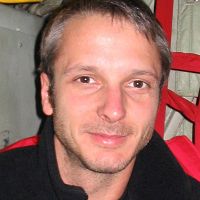Arvin et al., 2017
Global patterns of dust and bedrock nutrient supply to montane ecosystems
Arvin, L.J.; Riebe, C.S.; Aciego, S.M.; Blakowski, M.A. (2017)
Science Advances, Vol. 3, no. 12, eeao1588
-
Sierra, GRAD STUDENT
-
Sierra, INVESTIGATOR
-
Sierra, COLLABORATOR
Abstract
University of Wyoming graduate student Lindsay Arvin collected pine needles and conducted isotopic analyses to determine the relative amounts of dust and bedrock nutrients that trees uptake. Photo from Lindsay Arvin.
A global compilation of erosion rates and modeled dust fluxes shows that dust inputs can be a large fraction of total soil inputs, particularly when erosion is slow and soil residence time is therefore long. These observations suggest that dust-derived nutrients can be vital to montane ecosystems, even when nutrient supply from bedrock is substantial. We tested this hypothesis using neodymium isotopes as a tracer of mineral phosphorus contributions to vegetation in the Sierra Nevada, California, where rates of erosion and dust deposition are both intermediate within the global compilation. Neodymium isotopes in pine needles, dust, and bedrock show that dust contributes most of the neodymium in vegetation at the site. Together, the global data sets and isotopic tracers confirm the ecological significance of dust in eroding mountain landscapes. This challenges conventional assumptions about dust-derived nutrients, expanding the plausible range of dust-reliant ecosystems to include many temperate montane regions, despite their relatively high rates of erosion and bedrock nutrient supply.
Citation
Arvin, L.J.; Riebe, C.S.; Aciego, S.M.; Blakowski, M.A. (2017): Global patterns of dust and bedrock nutrient supply to montane ecosystems. Science Advances, Vol. 3, no. 12, eeao1588. DOI: 10.1126/sciadv.aao1588
 This Paper/Book acknowledges NSF CZO grant support.
This Paper/Book acknowledges NSF CZO grant support.
Explore Further




